“A Very Remarkable Woman” Little Missenden artist
Mary Henrietta Dering Curtois (1854 – 1928)
by Alison Bailey
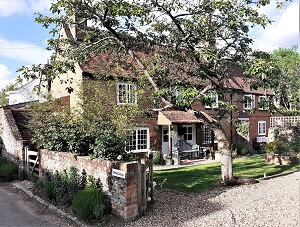
Painter Mary Henrietta Dering Curtois was described as “a very remarkable woman” by the celebrity artist, Louise Jopling. She lived in Little Missenden, at Ridgewell Cottage, which has been known as Dering Cottage since her death. For over 50 years it was also the home of Pat Harrison, the founder of the Little Missenden Festival. Pat grew up in Missenden House, and knew Mary Curtois who was a friend of her mother’s, Pauline Stephens, also an artist.
In a letter written in her 90s, Pat wrote “Miss Curtoys, as she was always called in the village, was a marvellous person. She was out at all times painting, especially at night! Charcoal and chalk. She was always painting the village children and was a great friend of Lady Alice [Ashley] at the Manor and for all her vague ways was as sharp as a needle with piercing blue eyes, rather like the TV’s Miss Marple. She got the keys from a reluctant vicar and with two other enthusiasts rang the church bells for the Victory in November 1918! The bellringers were all at the front or killed and we had no bells 1914-18. I loved her and often came to sing to her in the studio (which was built for her by my great-uncle, Charles Townsend) while she painted. I never thought I would come to live here!”
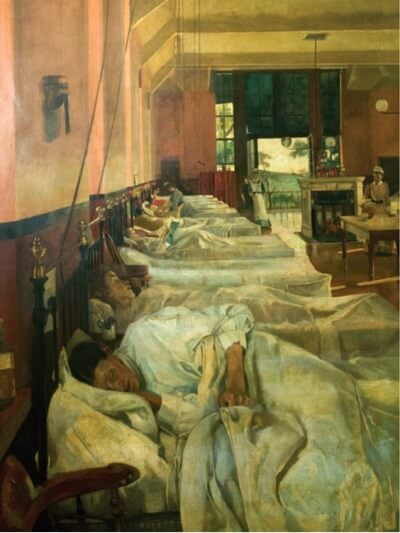
Mary Curtois was born in 1854 into a prosperous Lincolnshire family. She was the eldest of 11 children of Reverand Atwill Curtois, the Rector of Branston. She studied at the Lincoln School of Art and later at the Académie Julian in Paris. She had her first success as a painter in Paris when she exhibited a charcoal portrait of her mother, Ann Henrietta Lee Warner Curtois, at the Salon. This is now in the Usher Gallery, Lincoln. In London, she established a studio in Earls Court and exhibited in many galleries including the Society of Portrait Painters and the Royal Academy. In 1892, her painting, Ruston Ward, Lincoln Hospital was hung ‘on the line’ at the Royal Academy “where it was distinguished among the surrounding canvases by its uncompromising realism and originality of treatment”. This painting is also in the Usher Gallery which additionally has a collection of work by her sister, Ella Rose Curtois, a sculptor. St Mary’s, Whaplode, in Lincolnshire has a fine painting, Christ in Glory by Mary Curtois which is Pre-Raphaelite in style.
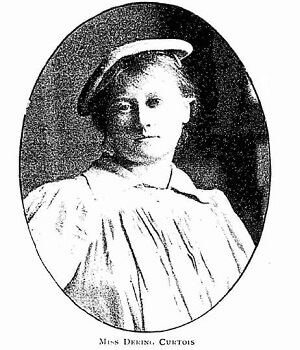
In addition to her reputation as a painter, Mary Curtois was well known as a lecturer and an active member of several debating societies. She was a member of the Forum and the Lyceum Club, both important women’s networking clubs of the time. An Appreciation in the Forum Club newsletter described her as follows: “Both as conversationalist and a speaker, Dering Curtois was always extraordinarily interesting, and sometimes brilliant. Moreover, nature had given her a beautiful voice, and even a certain difficulty in pronouncing the letter R added to the charm of her speech. She shone in debate, swiftly finding the weak points in her adversary’s armour, and her blue eyes gleamed with mischievous delight as she put forth all her guile and force to vanquish an opponent. Far from evading such encounters in daily life she enjoyed them, and an excellent memory stood her in good stead”.
Mary Curtois put these skills to good use when she joined the campaign for Women’s suffrage as a member of the Artist’s Suffrage League. In Little Missenden she joined Catherine Courtauld’s Mid Bucks Suffrage Society and was a regular speaker at local meetings. In 1914 she went on a caravan tour around the rural villages of Buckinghamshire to raise awareness of the votes for women movement and sell the suffragist newspaper, The Common Cause. This wasn’t for the faint hearted because suffrage caravans didn’t always get a friendly welcome, often being pelted with rotten fruit and dead mice. However, things appear to have gone well on this tour as she explained to a local journalist, “It was very gratifying to find that the working-men grasped the justice of our claim. One proud father pointed to his baby in his arms and said, “I wish her to have the vote, as I know what it has done for me”.
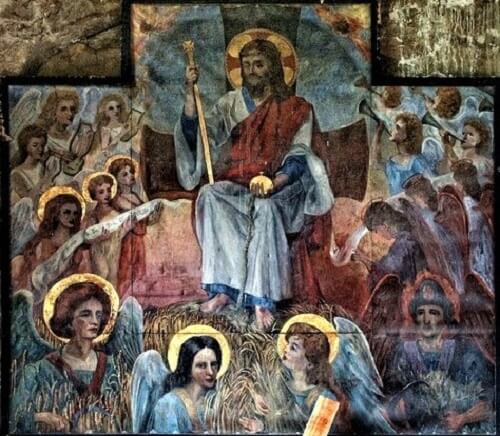
Mary Curtois was a founder member of Louise Jopling’s Chiltern Club of Arts and Handicrafts. She was chair of the Art Section and, also a founder, and regular exhibitor at the Bucks Art Society. In later years she loved painting local scenes and nature outdoors, “forgetful of her advancing years, as she worked in all weathers; this disregard of risk, unhappily contributed to her final illness”. Mary Curtois died from pneumonia at Chesham Cottage Hospital, October 1928, just after women achieved universal suffrage with the Equal Franchise Act.
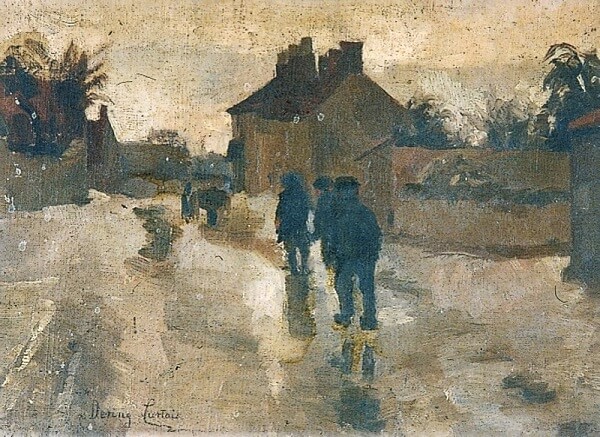
Louise Jopling published this tribute in the local press: “Last week there passed away a very remarkable woman. Miss Curtois made her home in Little Missenden, where she interested herself in all the activities of the little village. She was an accomplished artist. Her sketches showed her sympathy with nature. They who had the privilege of her friendship will not easily forget the earnestness with which she spoke on any subject that interested her, and then the merry peal of sudden laughter that was evoked by her keen sense of humour. At the Memorial Service, held at Little Missenden, it was a sad, but sweet pleasure to see the heaps of lovely flowers that friends had sent to accompany her to her last resting place on earth. She was much loved by young and old.”
It is known that Mary Curtois left five of her local paintings to the Little Missenden Village Hall but their current whereabouts are unknown. If anyone has any information on Miss Curtois, or any of her paintings, signed Dering Curtois, please get in touch with me at [email protected].

